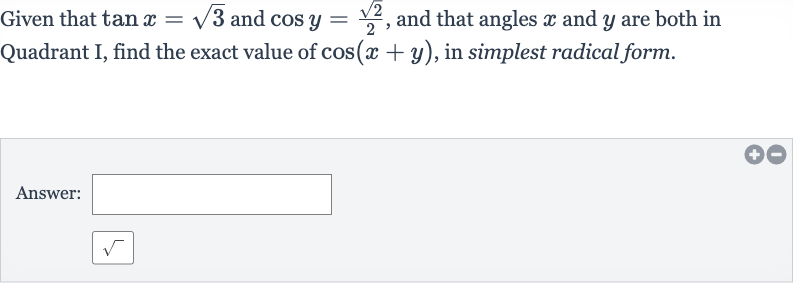Full solution
Q. Given that and , and that angles and are both in Quadrant I, find the exact value of , in simplest radical form.Answer:
- Find : Use the given information to find the values of and . Since , we know that . We also know that (Pythagorean identity). We need to find .
- Calculate : Calculate using the Pythagorean identity.Since , we can assume a right triangle where the opposite side is and the adjacent side is (since tan is opposite over adjacent). Therefore, the hypotenuse is . So, .
- Calculate : Calculate using the Pythagorean identity.Now that we have , we can use the identity to find . We have , so . Therefore, , and .
- Find : Use the given information to find . We are given . Using the Pythagorean identity , we can find . We have . Therefore, , and .
- Use angle sum identity: Use the angle sum identity for cosine to find . The angle sum identity for cosine is . We have already found , , , and .
- Substitute and simplify: Substitute the values into the angle sum identity and simplify.

